She is the most fascinating woman of the Middle Ages: Hildegard of Bingen was an abbess with a wide range of interests. She is known above all for her theological writings and visions as well as her knowledge of medicinal plants. Her former place of work, the Rupertsberg convent in Bingen, has been brought back to life with the help of a multimodal elevator. With Dr. Matthias Schmandt, director of the Museum am Strom, I set off in search of clues.
Villa Rupertsberg: What remained of the monastery
Where today the Villa Rupertsberg stands well hidden in an inner courtyard, there was the Rupertsberg monastery founded by Hildegard in the 12th century. Only five arcades survived war, destruction and reconstruction. For years the building was privately owned; the arcades were simply bricked up. Now the last relics of the former monastery have been uncovered. "This is where Hildegard lived and worked. Here she finally becomes tangible for everyone," says museum director Dr. Schmandt.

Villa Rupertsberg has been open to visitors since May 2023. Upon entering the building, my gaze is drawn directly to the intricately designed wallpaper. I have the feeling that I am looking down into the sanctuary from a gallery. In fact, the chancel was several meters lower at the time. The city archive has also moved into the building, with a reading corner and a small exhibition on the history of the Rupertsberg. But the highlight is a very special room that brings the monastery to life: the elevator to the past.

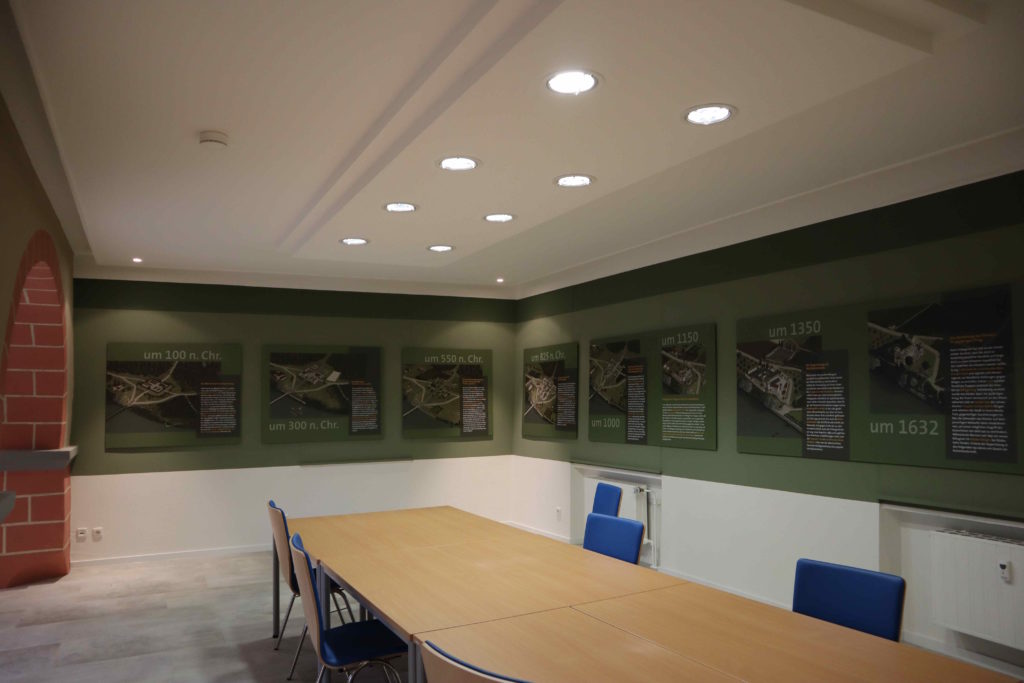

Dive into the Middle Ages
I enter the dark room, where cheerful elevator music plays. When I select "Start" on a small touchscreen, the journey begins. Within a few seconds, I travel back 900 years into the past, virtually of course. On a total of three screens that look like windows, concrete walls pass by and the visitor suddenly finds himself in the southern aisle of the church. Quiet church chants fill the room. I don't even know which of the screens I should look at first. I try to keep all three screens in view, but quickly realize that this doesn't work. So I concentrate on one window in turn. The visualization in combination with the music seems so real that I have the feeling I'm actually standing in a church.
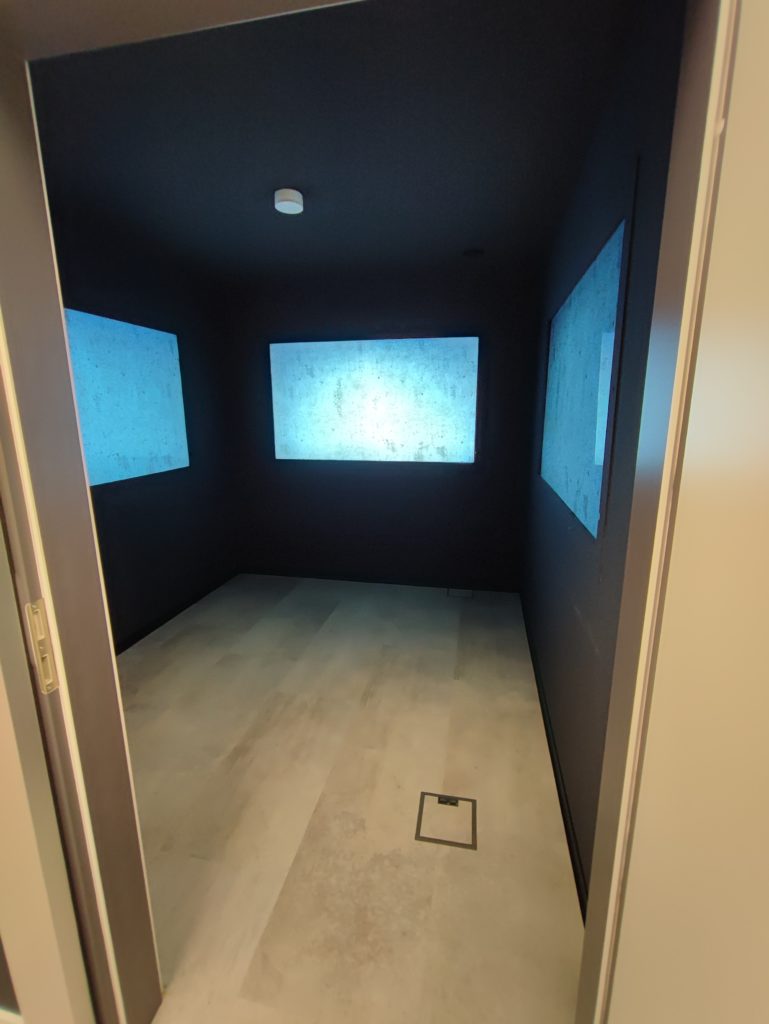
There is so much to discover: Whether the view from the church tower or the walk through the nave: A lot of attention to detail was paid here. But how do you know what the monastery looked like? "We don't know exactly, of course. But we have been inspired by similar buildings, such as the floor of the monastery church in Sponheim," explains Dr. Schmandt. He says one thing is important to him above all: good storytelling that is well researched. I was particularly taken with the monastery garden. If you look closely, you can recognize one or the other medicinal plant that also grows in the herb garden around the villa. When asked if he, too, has a favorite stop, the museum director can even name two: "I find the view deep into the church and the forecourt, where secular life took place, very successful."
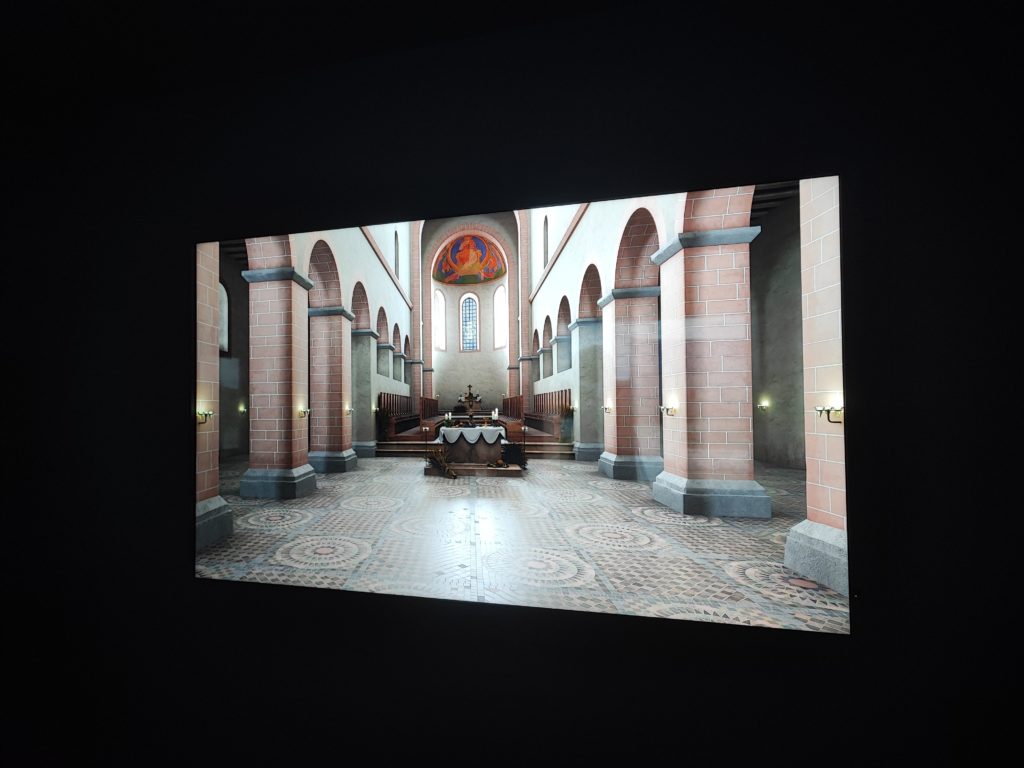
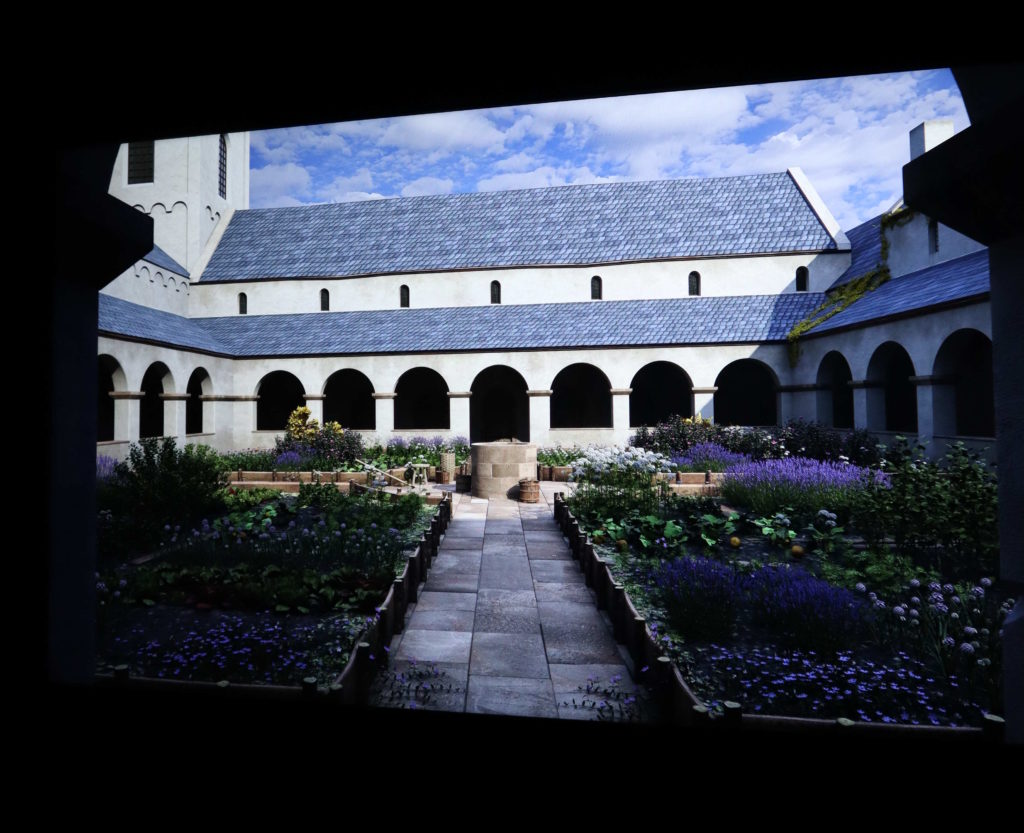
A trip in the ride chair takes about 15 minutes, depending on how much time you take for the individual stations. Five to six people fit comfortably inside. What I particularly like about the tour is that the stations can be selected and repeated at will. The project was financed in part by the EU's LEADER program. By the way, the Elevator to the Past has also been nominated for the Rhineland-Palatinate Tourism Award 2023 in the Project of the Year category. I'm keeping my fingers crossed!
Not enough of Hildegard yet?
If you want to find out more about St. Hildegard, you should also pay a visit to the Museum am Strom. The museum on the banks of the Rhine is just a few minutes' walk from Bingen main station. A combined tour is offered for groups of up to 25 people, which first takes you through the exhibition in the Museum am Strom and then into the elevator. A bus transfer is also available on request. Ideal for those who are not so good on foot. If you only want to use the elevator to the past, you can pay 2 euros.
Opening hours and guided tours
Opening hours:
From October: Tuesdays to Thursdays and Sundays from 2 to 5 pm. Closed on public holidays.
Combined tour of the Museum am Strom and Villa am Rupertsberg
In the large Hildegard exhibition in the Museum am Strom, the entire life and work of the great prophetess is first vividly presented. Then it's off to the original place where she worked on the Rupertsberg, where a new historical experience has now been created in the remains of Hildegard's church: the "elevator to the past" takes you right into the monastery of the 12th century - and allows you to experience Hildegard's life first-hand. The guided tour between the museum and the villa offers the opportunity to learn about the history of the monastery (bus transfer also possible). It is also possible to include the "Hildegarten" at the museum and the "Rupertsberg Vault" in the tour.
Guide details:
Duration: approx. 2 ¼ hours
Group size: max. 25 people
Price per group: 90 € plus entrance fee
Dates: bookable all year round at Tel. 06721/184353 (Tue-Sun, Museum am Strom) or 06721/184200 (Mon-Sat, Bingen Tourismus & Kongress GmbH)
Further information is available at www.bingen.de/hildegard-kloster or on this flyer to Villa Rupertsberg.

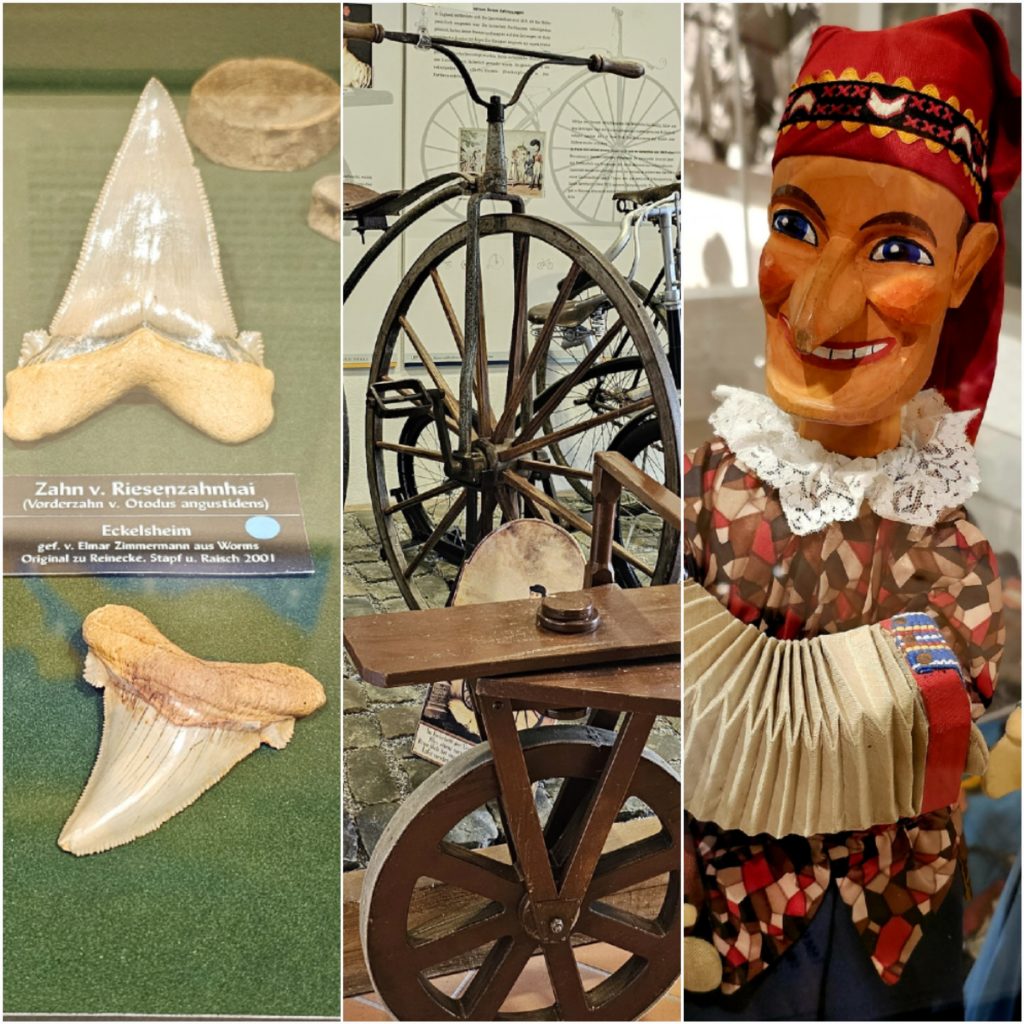
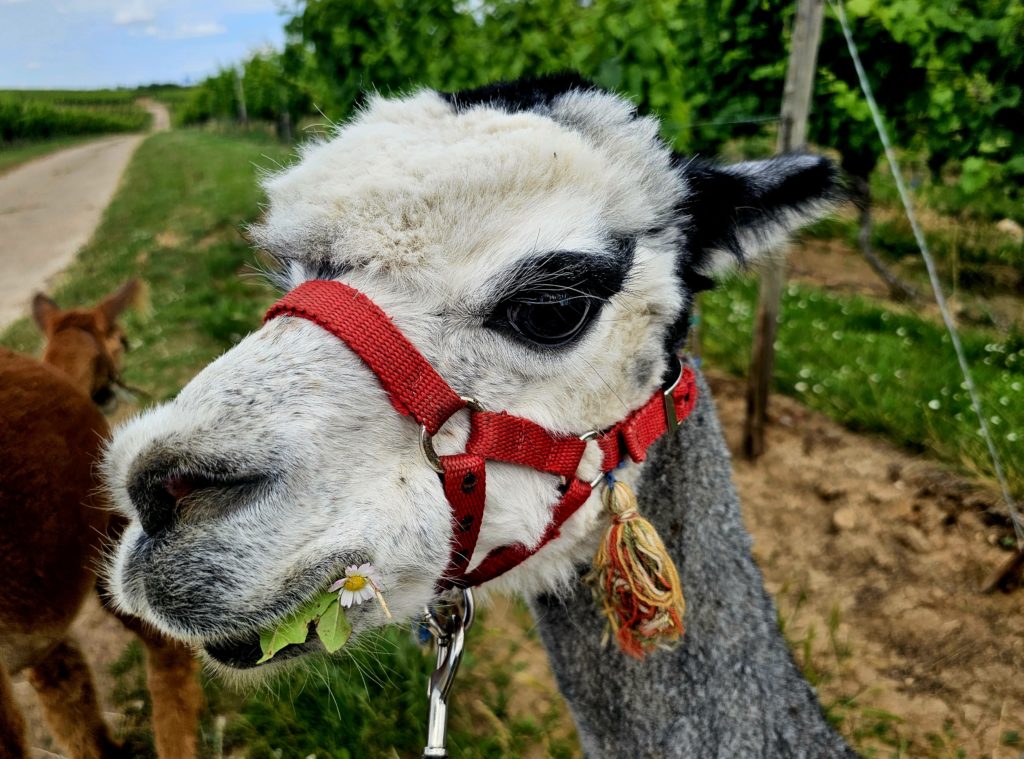
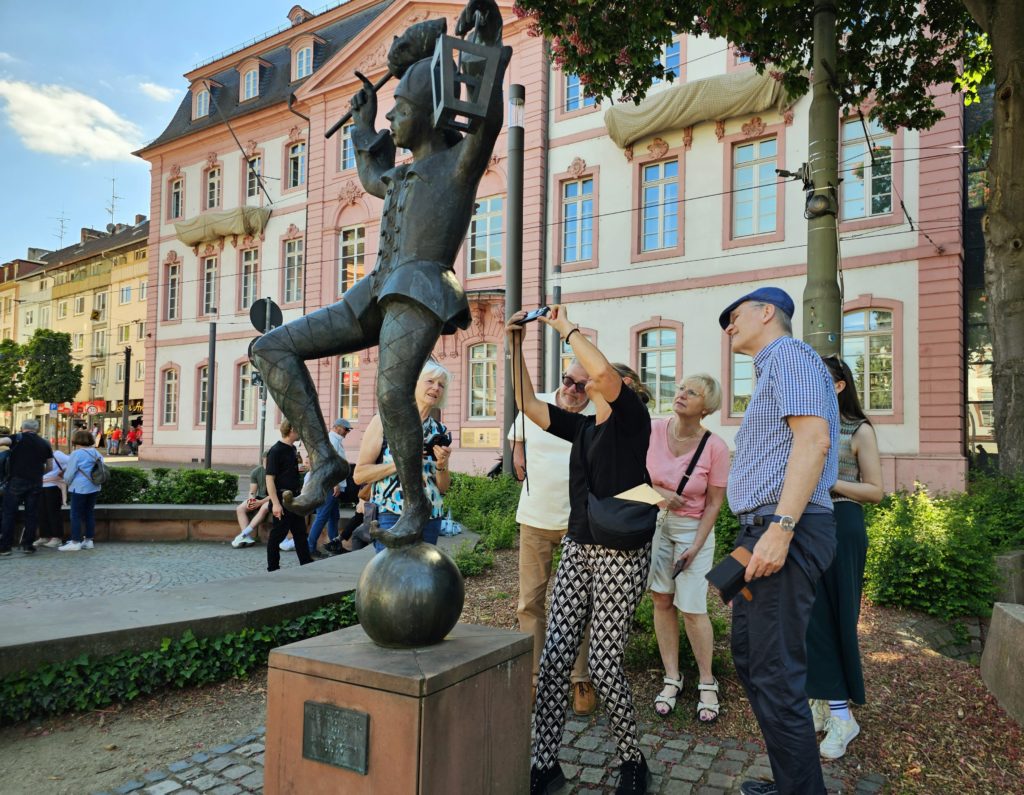
2 Responses
Dear Sir or Madam
I am interested in visiting the Villa Rupertsberg with the elevator throughbisse time.
Would it be possible to book a 1 hour guided tour for 12 people for 18:30 on 13.08.?
Yours sincerely
Monika Dillmann
Dear Ms. Dillmann,
Thank you for your request. Please contact the Museum am Strom in Bingen directly regarding the guided tour. You can find the contact details in the blog post. Best regards, Annkatrin König